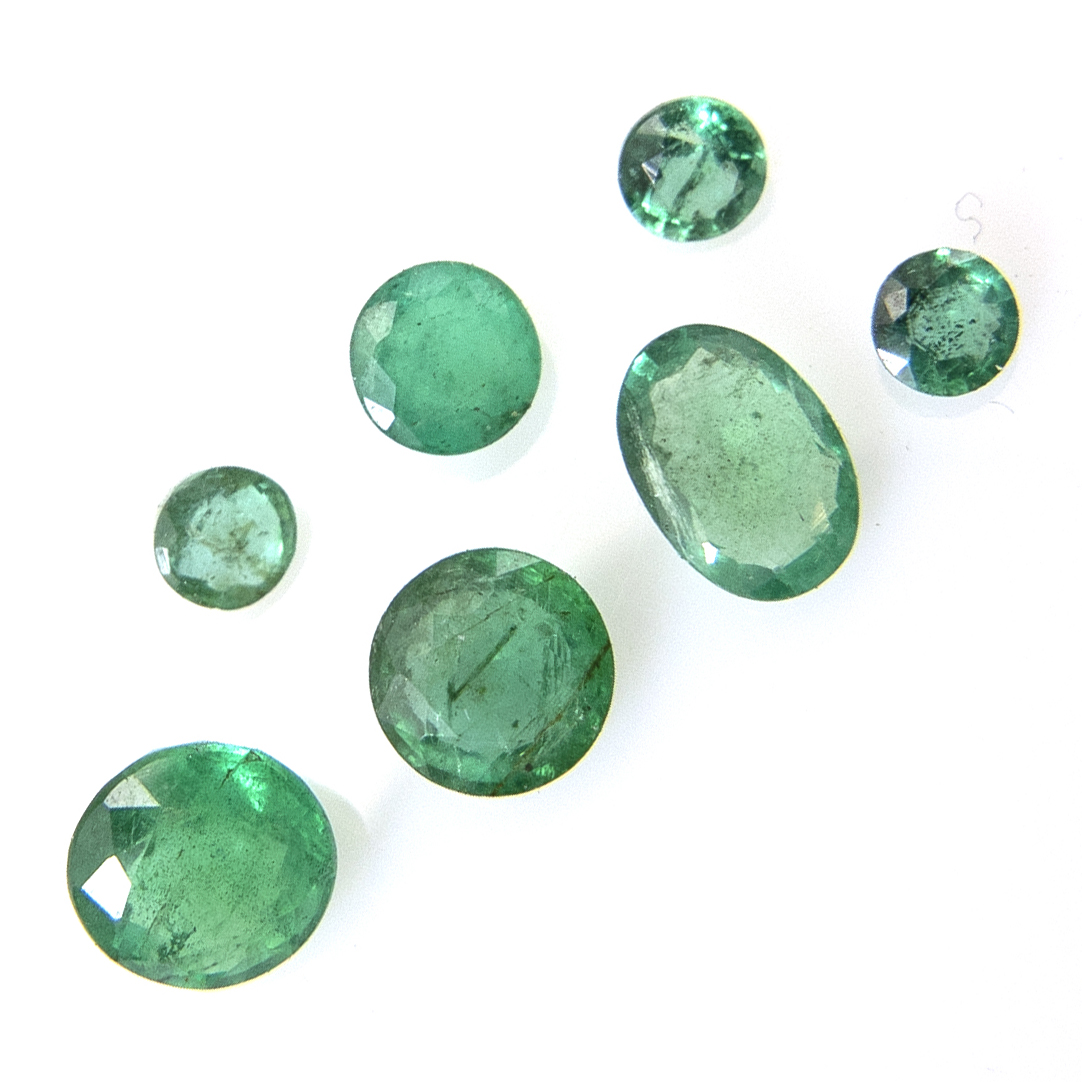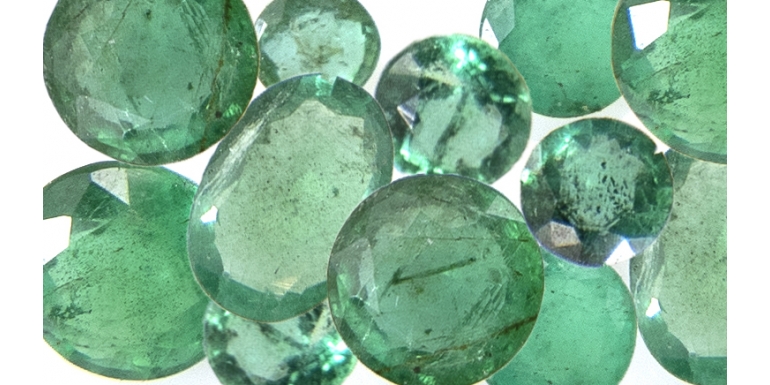Emerald, next to diamond, ruby and sapphire, belongs to the highest, first class precious stones. Bright green, transparent emeralds owe their color to chromium or vanadium compounds. Less often there are specimens with a yellowish shade, which in turn is affected by iron salt compounds in the mineral composition. According to an ancient historian, Pliny the Elder, who described the color of the stone as follows: "... there is no color that would be more pleasing to the eyes." Modern research shows that green color soothes the nervous system, concentrates thinking, and gives a feeling of refreshment.
Value in jewelry
Emerald is one of the most expensive precious stones. The brightest stones have a bright green color, weighing 5-6 carats, without inclusions. Although it is the inclusions that allow you to easily prove the natural origin of the stone. The purest color emerald can cost more than a diamond of the same size. Gemmology specialists say that the name "emerald" can be used only for beryllium, which owes its color to chromium compounds. The exception is the dark green Beryllium from Colombia, which are considered to be top-grade minerals, despite the fact that they owe the color to vanadium compounds.
Specialists are equipped with special charts in which the categories of shades classifying emeralds have been specified, in practice, unfortunately, they are not always used. Hence, problems often arise in the classification of green Beryllium, which is acceptable to call emeralds and which are not. It is also not easy for a stone lover to distinguish a natural emerald from a synthetic one, because the technology of producing unnatural stones is increasingly advanced and disseminated. In my studio I use only carefully selected stones, which I choose personally.
Emerald is quite a hard stone (7.5-8 on the Mohs scale) but very fragile. Therefore, they must be bound very carefully. It looks beautiful when surrounded by white gold or platinum and yellow gold. In my studio I use only carefully selected stones in terms of color intensity, which I choose personally.



A drop of history
The name of the stone, derived from the Greek language from the word "smaragdos", comes from the Sanskrit "zammorod". The modern name of the stone appeared only in the sixteenth century. Indians from Columbia called emeralds "green ice". About four thousand years ago, in the time of the Pharaohs of the XII Dynasty, emeralds were obtained in Egypt, in the mountains, between the Red Sea and the Nile. Gemmologists say the word "smaragdos" originally referred to all green opaque minerals. It was only later that the name began to belong to the definition of transparent stones, which in modern classification belong to green Beryllium.
According to legend, Queen Cleopatra herself visited Egyptian mines, who gave them her name. The emerald mine named after the famous ruler was exploited until the thirteenth century, only later mining there was abandoned. The largest emerald crystal, weighing 7.5 kg. was found in Brazil, while the 4.8 kg stone, having the largest transparent part, was found in South Africa. Until the mid-nineteenth century, Colombia was practically the only supplier of emeralds to the world market. Later new extraction sites for these minerals were found in the Central Urals, the United States and Australia. Today, the extraction of these precious stones takes place in the territory of Mozambique, Namibia, Norway, Pakistan, Sri Lanka and South Africa.



And the magic happens
From ancient times, emeralds were considered powerful talismans. The natural emerald is a stone of wisdom, clear mind and hope. A person wearing jewelry that is emerald is as if fenced off from the influence of evil powers and misfortunes. The emerald is also a talisman of travelers, protecting people in distant trips. Some believe that the emerald can attract prosperity, pushes excessive drives and brings calmness. It is said that emeralds strengthen memory, chase away evil spirits, and protect against melancholy. In addition, these stones support scientific research and support philosophical arguments.
Emerald supposedly can burst if a loved one does not remain faithful. Therefore, wearing emeralds is only recommended for those who have a pure soul. This belief comes from the beautiful ancient Colombian legend:
God Muisc Are created two immortal human beings to populate the earth: a man named Tena and a woman named Fura. Are's only caveat was that these two people had to remain true to each other to preserve their eternal youth and lead a carefree life in a land full of beautiful flowers and plants. In addition, they had to respect each other and the nature that surrounded them. However, the woman met another young man named Zambi and did not remain loyal to her companion. When she returned to Tena, he understood that she had cheated on him - time had already left a mark on her beauty. As a result, their immortality was taken from them. Tena committed suicide after regret of lost love. Fura put the man on her lap and mourned him for 8 days, during which she aged and aged until she died. Tears, cried by Fura and brushed by the sun, have turned into beautiful stones - emeralds remaining in the depths of the rocks. Today, the peaks of Fura and Tena, rising above the valley of the Minero River, are the official guardians of the emerald zone of Colombia. They lie about 30 km north of the Muzo mine, where the largest Colombian emerald mines are located.

Emerald as a medicine
Already in ancient times, emerald was considered a treatment aid stone. This mineral was a highly valued antidote for a viper or scorpion sting. Today, lithotherapists (specialists in treatment of precious and semi-precious stones) claim that emeralds exude Yin's receptive energy, so they can help with insomnia and eliminate unpleasant dreams. In addition, emeralds have fever-lowering properties to support the treatment of inflammation and infection. Emerald supports the work of the heart and lowers blood pressure, and thanks to its intense green color, it is recognized as a lithotherapy agent in the treatment of eye diseases.





Follow us